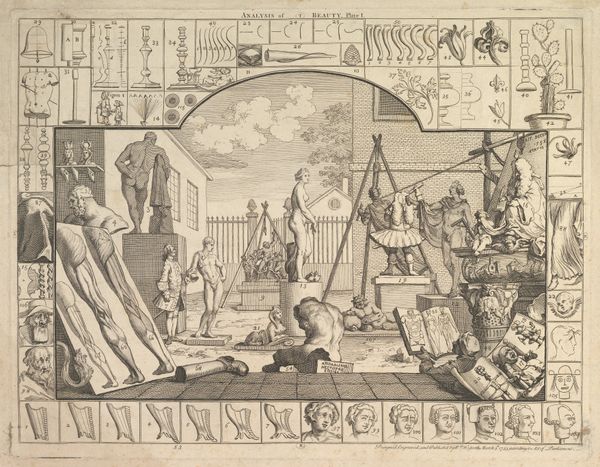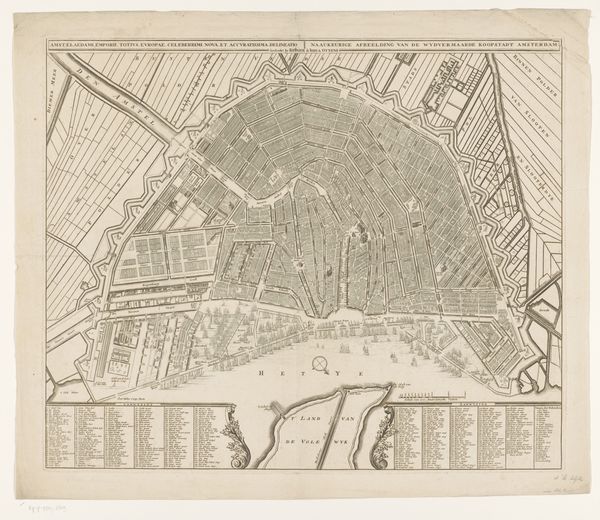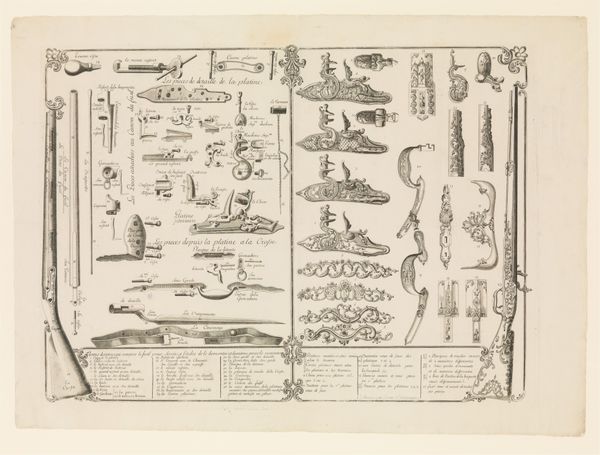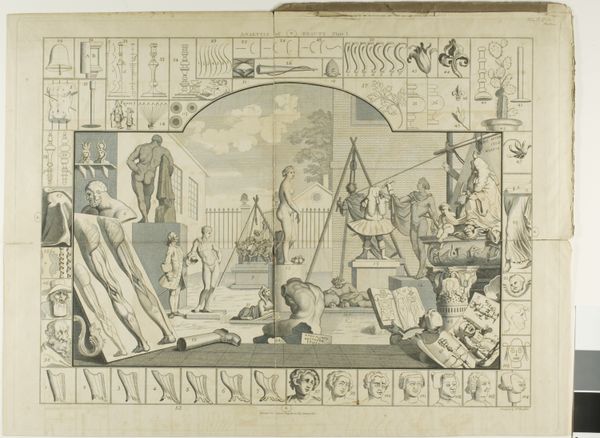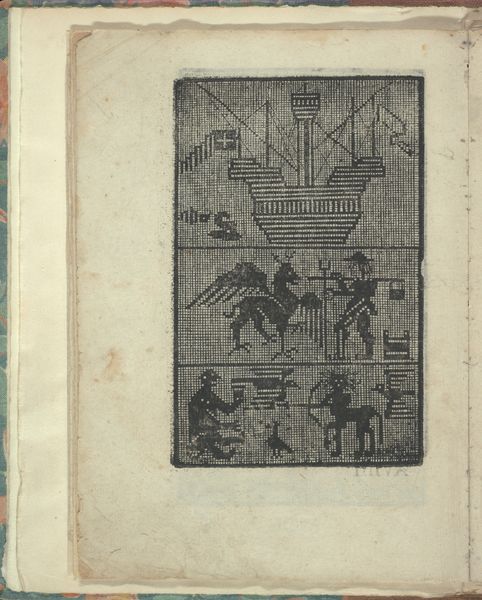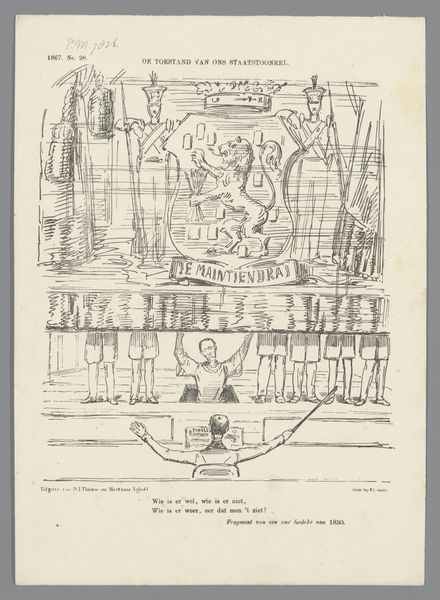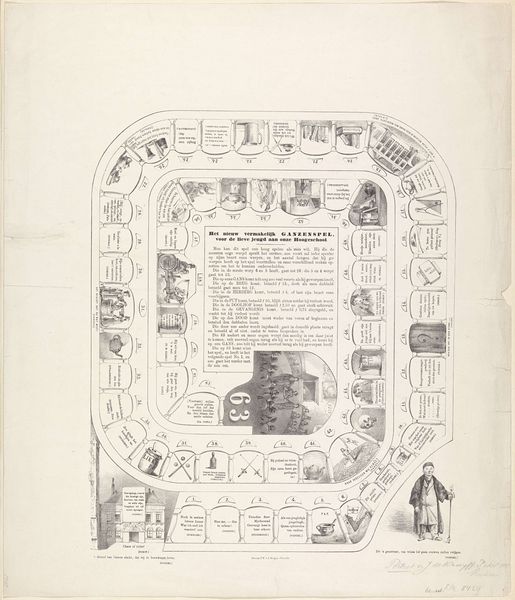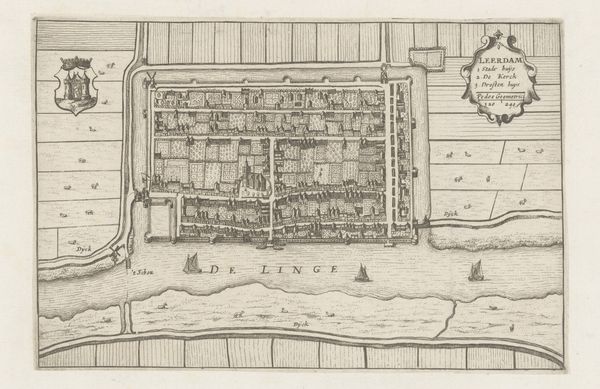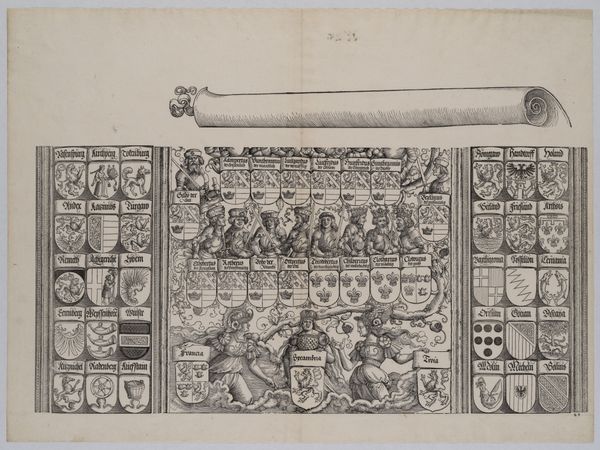
Dimensions: height 214 mm, width 333 mm
Copyright: Rijks Museum: Open Domain
Editor: This is "Raderboot" by Samuel Jessurun de Mesquita, created sometime between 1883 and 1942. It’s a woodcut print, and it’s striking how the image is broken up into this grid-like structure. What stands out to you in this piece? Curator: The gridded structure immediately brings to mind the historical context of colonial cartography and the urge to categorize and control the world. How does this "mapping" of the steamship, surrounded by what appear to be various national flags, speak to themes of power and maritime trade during the period? Editor: That’s an interesting take. I was focused more on the geometric composition itself, the way the image is broken up, almost like a distorted photograph. Curator: Precisely. But let's push that further. Mesquita's adoption of the grid, particularly in dialogue with what seems like a nod to Ukiyo-e, complicates our understanding of cultural exchange. The flags representing various nations are constrained within this rigid structure. Do you see that hinting at how national identities can be both celebrated and confined? Editor: I think I understand… So, it’s not just a formal choice but also a statement about the constraints of nationalism or the commodification of culture. The ship itself becomes a symbol of trade routes, both connecting and dividing different nations. Curator: Exactly. Mesquita may be reflecting on the complexities of globalization and cultural representation, a commentary on how identity is packaged and perceived in a rapidly changing world. How do you think his identity as a Sephardic Jew, who would later be murdered at Auschwitz, may inform his art and politics, especially considering this earlier work? Editor: That definitely adds another layer of complexity. Thinking about his biography casts a long shadow over the whole piece, making me think about displacement, journeys, and lost identities. It becomes intensely personal. Curator: And highlights the urgency of continued examination of these layered histories. The visual language isn't neutral; it’s loaded with political meaning. It prompts us to continually ask: whose stories are being told, and at whose expense?
Comments
No comments
Be the first to comment and join the conversation on the ultimate creative platform.
